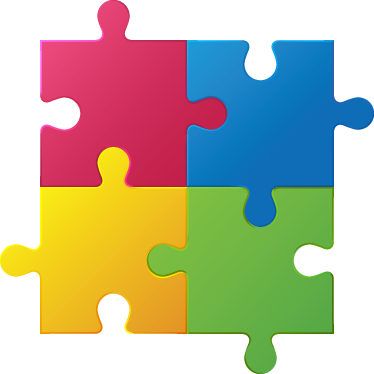

Home - Units are a Relationship Map
In this Big Idea students explore connections between measurement units and how we use measurement to make sense of our world. Students combine measurement tools with data analysis strategies such as graphs to share their findings. This unit offers opportunities for extension as students move beyond the use of informal unit towards an understanding of the logic behind the metric measurement system.
Students will understand:
Students estimate, measure, compare, convert and record length, area, volume, capacity and mass using formal units. They read and record time in hours and minutes, convert between units of time, and solve simple problems involving the duration of time. Students collect and organise data, and create and interpret tables and picture and column graphs.
Data
Length
Time
Notes

In this activity, we make the relationship between units visible by examining and creating graphs. We use these graphs to make observations and predictions about relationships, both within and beyond the graph. - See page 99
Questions for reflection:

Students use a nonstandard unit of measurement to determine the size of different classroom objects. - See page 104
Questions for reflection:
The International System of Units (SI) defines standard units for all situations where a measurement is required. We refer to this as the Metric System of measures. There are base units and multiples of most units and these are indicated by common prefixes. Students can extend their learning by exploring standard units in the SI system. Student may like to compare SI units with those from other measurement systems e.g. imperial.

In this investigation, students consider how far they can travel in10,000 steps. They also consider the amount of time it would take to walk 10,000 steps. - See Page 110
Questions for reflection:


Ponder this as a class:
Paul Salopek has embarked on the Out of Eden Walk, trekking from Africa to the southern tip of South America and tracing the route of humanities spread from its point of origin across the globe. Paul has been walking since 2013 and is currently in India not far south of Agra and has walked 10,300 km.
“Paul Salopek’s 34,000 km odyssey is a decade-long experiment in slow journalism. Moving at the beat of his footsteps, Paul is walking the pathways of the first humans who migrated out of Africa in the Stone Age and made the Earth ours. Along the way he is covering the major stories of our time—from climate change to technological innovation, from mass migration to cultural survival—by giving voice to the people who inhabit them every day. His words, as well as his photographs, video, and audio, create a global record of human life at the start of a new millennium as told by villagers, nomads, traders, farmers, soldiers, and artists who rarely make the news. In this way, if we choose to slow down and observe carefully, we also can rediscover our world.”
Watch this introduction:
Allow time for students to explore the Out Of Eden Walk website.
Follow Paul on Twitter - Paul Salopek or Out of Eden Walk

In this investigation, students explore how long common tasks actually take to complete and expand their understanding of how we measure and record time while doing so. Students will find out what they can actually do in 'just a second' compared to 'just a minute; terms that are used almost interchangeably and with great inaccuracy. Armed with a better understanding of how long things really take students will plan a trip using online timetables and schedules that maximises their use of a twenty-four hour period.
This investigation extends what children have been learning about relationships between units. Students should build an understanding of how a second compares to a minute, a minute to an hour, an hour to a day etc. Students have practical experience with time and the school day is very much run to a clock. This investigation should begin with exploring the students' experience of time and how they use it in their lives. Rather than considering a mathematical investigation of time as existing in isolation from the real world, there should be many opportunities to refer to time and build understandings incorporated into the daily schedule. This investigation is therefore a more detailed study of a concept used all of the time.
Questions for reflection:
Resources:
Clocks, stopwatches, access to timetables and event schedules, maps (paper and electronic), graph paper, spreadsheet software,
Look fors:
How are students measuring the time that an activity takes? - This is particularly important with activities which take one second or close to that. Students need to be very accurate with their measure and will find it difficult to achieve this. A better approach might be to measure the time that it takes to repeat the activity a number of times (e.g. write twenty letters on a page) and then divide the total time but the number of attempts. Students who see this as an option are thinking mathematically.
How do students deal with ambiguity? - Students are used to dealing with problems which are neat and where there is a correct answer, but this is not how problems present in the real world. In the more expansive component of this investigation, students are given only a few parameters within which they must operate; a twenty-four hour period of time and the constraints or reality i.e. no time travel or spaceships. Within these boundaries, students will need to think creatively, explore the information available to them and act strategically with what they know.
Are students considering all of the time involved? - Any traveller knows how much time is wasted on waiting. Waiting in cues, waiting for connections, waiting at security check-points. Students need to consider this in their plans and consider how their itinerary might change due to unforeseen circumstances. If students are to maximise their time, they should consider activities which can be a part of their inevitable wait time.
How are students keeping track of their time? - Students have many means at their disposal to keep track of their time from simple lists to more visual and mathematical methods such as timelines. This is an ideal opportunity to introduce students to timelines and to show them how an accurately constructed timeline can show them exactly where their time is being spent, and how much time remains. Once students are set on using a timeline they will need to show that they understand how a timeline represents time through equal spacing of divisions. One consideration for students to decide on is how many divisions they will use. The obvious response might be to use hour blocks but students might consider this too inaccurate. A discussion point to engage with is how has the choice of division altered how you see the amount of time you have and the number of activities you considered? Did more divisions lead to more planned activities?
